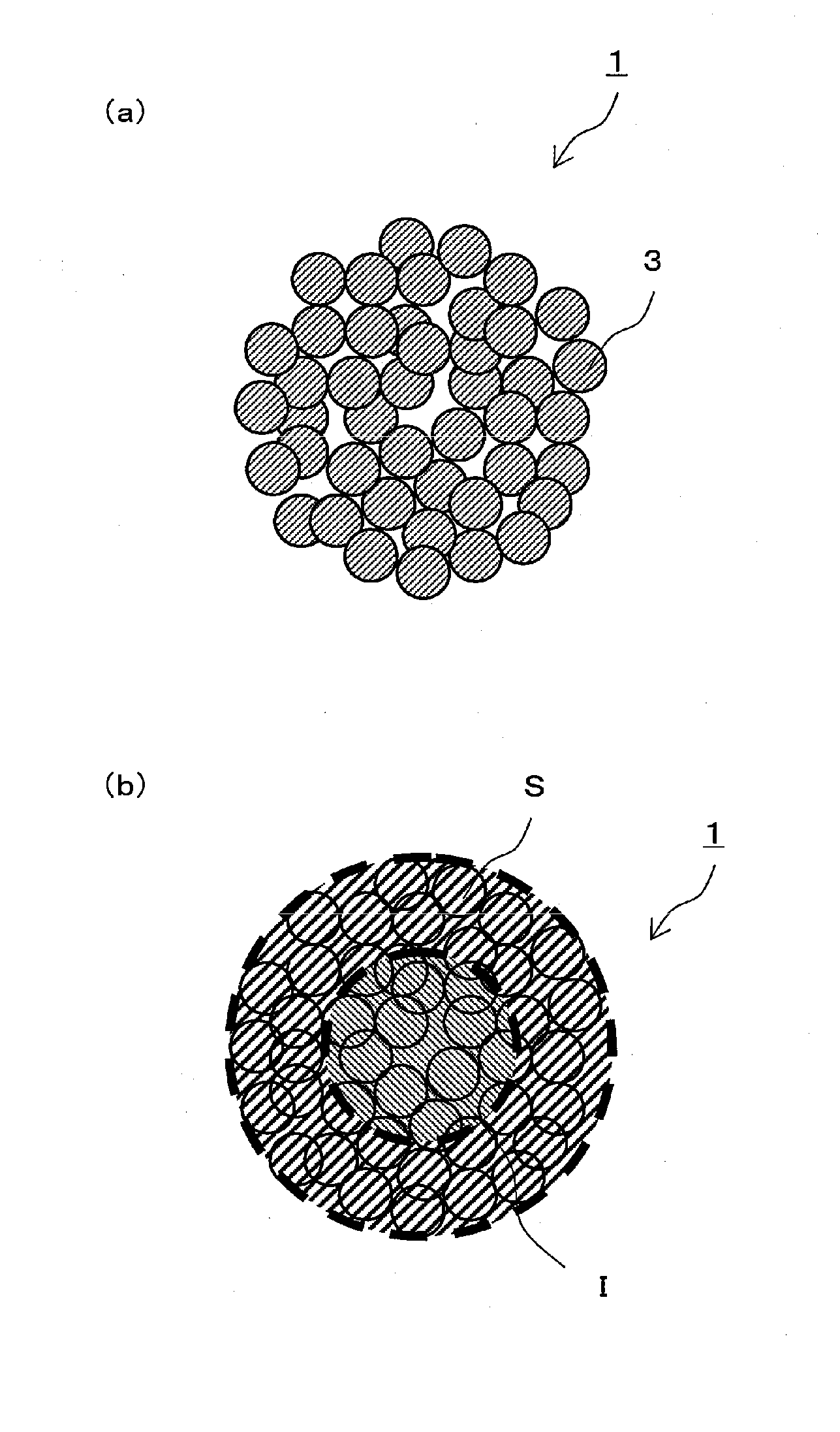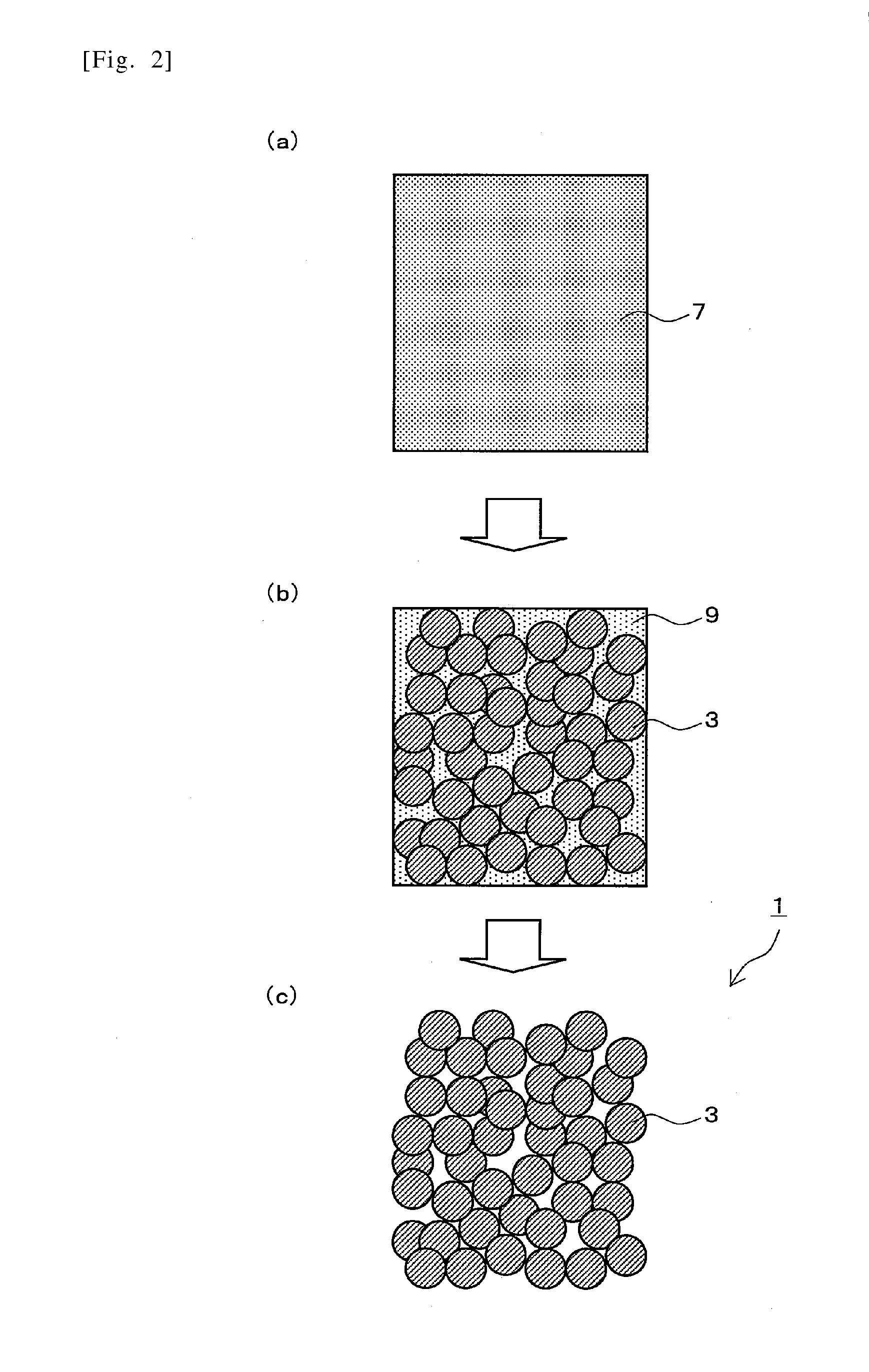Porous silicon particles and complex porous silicon particles, and method for producing both
a technology of porous silicon and porous silicon, applied in the field of porous silicon particles and complex porous silicon particles, can solve the problems of short life and achieve the effect of good cycling characteristics and high capacity
- Summary
- Abstract
- Description
- Claims
- Application Information
AI Technical Summary
Benefits of technology
Problems solved by technology
Method used
Image
Examples
example 1
Example 1-1
[0165]Silicon (lump shape, purity: more than 95.0%) and cobalt were blended at a ratio of Si:Co=55:45 (atomic %), and this was melted at 1480 degrees Celsius in a vacuum furnace. Then, it was cooled rapidly by cooling-rate of 800K / s using the single roll casting machine, and the ribbon made of a silicon alloy which has thickness of 200 micrometers was produced. This was immersed in tin molten metal of 940 degrees Celsius for 1 minute, immediately it was cooled rapidly with argon gas. By this process, 2 phase complex of the 2nd phase that comprises Si and Co—Sn or Sn was obtained. This 2 phase complex was immersed in 20% nitric acid solution for 5 minutes, and porous silicon particles were obtained.
examples 1-2 to 1-11
[0166]The manufacturing conditions of each example and a comparative example were summarized in Table 3. In examples 1-2 to 1-11, the complex porous silicon was obtained through manufacturing conditions shown in Table 3, such as a compounding ratio of an intermediate alloy element and each element, and other conditions being similar to the method of example 1-1.
example 1-12
[0167]Silicon (lump shape, purity: more than 95.0%) and magnesium were blended at a ratio of Si:Mg=12:88 (atomic %), and this was melted at 1090 degrees Celsius in a vacuum furnace in which argon gas substitute the inside. Then, after making it cast and solidify in a mold, it ground mechanically and an ingot made of a silicon alloy of the size of a 5-mm square was produced. Immediately after making this immersed in a 470 degrees Celsius lead molten metal for 30 minutes, it cooled rapidly with argon gas. By this process, 2 phase complex of the 2nd phase that comprises Si and Mg—Pb or Pb was obtained. This 2 phase complex was immersed in 20% nitric acid solution for 180 minutes, and porous silicon particles were obtained.
PUM
| Property | Measurement | Unit |
|---|---|---|
| particle diameter | aaaaa | aaaaa |
| porosity | aaaaa | aaaaa |
| porosity | aaaaa | aaaaa |
Abstract
Description
Claims
Application Information
 Login to View More
Login to View More - R&D
- Intellectual Property
- Life Sciences
- Materials
- Tech Scout
- Unparalleled Data Quality
- Higher Quality Content
- 60% Fewer Hallucinations
Browse by: Latest US Patents, China's latest patents, Technical Efficacy Thesaurus, Application Domain, Technology Topic, Popular Technical Reports.
© 2025 PatSnap. All rights reserved.Legal|Privacy policy|Modern Slavery Act Transparency Statement|Sitemap|About US| Contact US: help@patsnap.com



